By Christopher Miskimon
In early April 1942, the Royal Navy was preparing for the worst in the Indian Ocean. Prior to the war this body of water was akin to an English lake, so much of it bordering Imperial territory and patrolled by its warships. Now, with much of its strength needed elsewhere and a new war with Japan, Britain was on the defensive. It lacked the warships and aircraft to engage the Japanese on an even footing. Having lost Malaya, Hong Kong, and Singapore as bases, the Royal Navy was forced back to India and Ceylon. Now those ports were threatened by a Japanese carrier task force approaching from the Southwest Pacific.
Despite the odds against them, the British were determined to fight on. At 6 am on April 4, Squadron Leader L.J. Birchall took off to pinpoint the enemy fleet’s location. He was commander of No. 413 Squadron, a Canadian unit hastily sent from Scotland to aid in the battle. The Canadians had arrived only two days before but were immediately put to work searching the vast open sea for Japanese carriers and their escorts. The Canadian and his outfit of Consolidated PBY Catalina Flying Boats arrived just in time; the squadron they reinforced was down to a single operational aircraft.
Birchall’s orders were to search the area 250 miles southeast of Ceylon for signs of the Japanese. The Navy was under radio silence, so Birchall was ordered to report all sightings, friendly or enemy, to help headquarters ascertain the locations even of its own ships. The pilot flew his search area for 10 hours until he was actually 350 miles south-southeast of Ceylon, determined to find the enemy force. Just as the crew was calculating their return course a lookout spotted a ship on the horizon to the south. Birchall turned to investigate.
Expecting to see a British ship, they were astounded to find an entire Japanese fleet: carriers, battleships, and destroyers accompanied by supply vessels. Birchall immediately turned north while his radioman sent an urgent message. The Japanese were also alert and sent a half-dozen Zero fighters to intercept the scout plane. The fast and nimble Zeros quickly caught up to the lumbering Catalina and poured machine-gun and cannon fire into it. A cannon shell struck the radio just as the radioman was repeating his message. A machine gunner was also hit, mangling his leg. The PBY was going down.
Birchall used all his skill to keep the disintegrating plane aloft. He was able to make a water landing just as the tail broke off. The Zeros strafed the crew as they took to the water. Soon the Japanese destroyer Isokaze came along and pulled them aboard. It was not a gesture of mercy; they wanted to know whether the flyers had gotten off a message and what they knew about the British defenses. The survivors were secured inside a paint locker. Their ordeal was just beginning but had not been in vain. Back in Ceylon, their message was received and understood. The warning went out, but Birchall and his men were not heard from again.
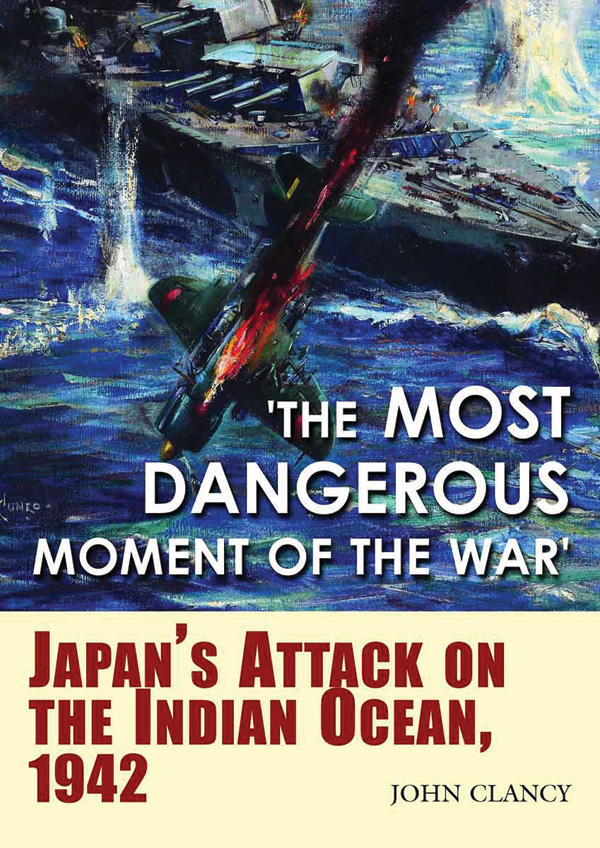 The harrowing ordeal of the Catalina’s crew was but the opening move in the Japanese attack on Ceylon. British Prime Minister Winston Churchill found this episode of the war the one that caused him the most anxiety. Author John Clancy has quoted the statesman in the title of his new work, The Most Dangerous Moment of the War: Japan’s Attack on the Indian Ocean, 1942 (Casemate Publishers, Havertown, PA, 2016, 180 pp., maps, photographs, bibliography, index, $32.95, hardcover).
The harrowing ordeal of the Catalina’s crew was but the opening move in the Japanese attack on Ceylon. British Prime Minister Winston Churchill found this episode of the war the one that caused him the most anxiety. Author John Clancy has quoted the statesman in the title of his new work, The Most Dangerous Moment of the War: Japan’s Attack on the Indian Ocean, 1942 (Casemate Publishers, Havertown, PA, 2016, 180 pp., maps, photographs, bibliography, index, $32.95, hardcover).
The fighting that ensued went entirely in favor of the Japanese, who lost a mere handful of aircraft and aviators in return for British losses of more than a thousand dead, six warships, two dozen merchant vessels, and more than three dozen aircraft. This one-sided victory left the Japanese in a position to dominate the Indian Ocean and even push the British back to the eastern coast of Africa with but another slight effort. The opportunity was squandered, however, due to the overextension of Japanese forces and the need to prepare for further operations in the Pacific that were deemed more important. After the draw at Coral Sea and the staggering loss at Midway in the following months, Japan would never again be able to mount a serious naval assault in the Indian Ocean.
The author’s father served aboard the cruiser HMS Cornwall, one of the ships lost in the battle, and this book is a fitting tribute to the men who served aboard all the vessels lost that tragic month. It is well researched and full of details about the British defenses and situation in and around Ceylon, details that go far in completing the story of why British leaders acted as they did at the time. The motivations of those leaders are explained without blame or excuse, presenting a balanced view of men acting under the stress of war during a critical time.
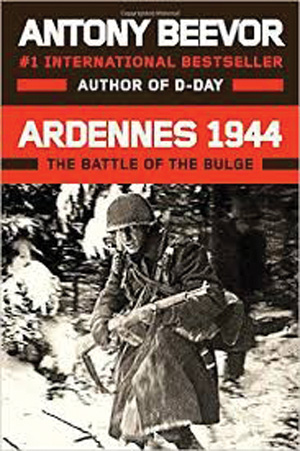 Ardennes 1944: The Battle of the Bulge (Antony Beevor, Viking Press, New York, 2016, 451 pp., maps, photographs, appendix, notes, bibliography, index, $35.00, hardcover)
Ardennes 1944: The Battle of the Bulge (Antony Beevor, Viking Press, New York, 2016, 451 pp., maps, photographs, appendix, notes, bibliography, index, $35.00, hardcover)
The Ardennes operation was the last gamble of the Third Reich. Hitler threw much of his remaining combat power at the Western Allies in a desperate bid to split them at the seam between the American and British armies. If the Germans could reach Antwerp, they believed they might knock the Anglo-Canadians out of the war, giving them breathing room to better resist the approaching Soviets to the east. At first things seemed to proceed for the advancing panzers. However, the defending Americans quickly began to rally. Heroic, often sacrificial stands soon coalesced into a stiffening line of resistance. By the time it was over six weeks later, the Battle of the Bulge had resulted in some 200,000 casualties all told, but the German military’s offensive capability was broken.
The Ardennes was a big battle, and it has been written about endlessly, making it difficult to find an account that does not seem redone. This book breaks out of that mold through the author’s extensive research, use of personal memoirs, and engaging prose. The author is an accomplished historian whose previous works touch on many of the major battles of the war, such as Stalingrad, Normandy, and Berlin. This new work adds the Bulge to his list of fine accomplishments.
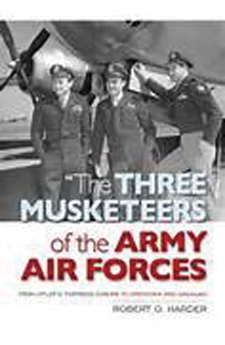 The Three Musketeers of the Army Air Forces: From Hitler’s Fortress Europa to Hiroshima and Nagasaki (Robert O. Harder, Naval Institute Press, Annapolis, MD, 2016, 288 pp., photographs, appendix, notes, bibliography, index, $39.95, hardcover)
The Three Musketeers of the Army Air Forces: From Hitler’s Fortress Europa to Hiroshima and Nagasaki (Robert O. Harder, Naval Institute Press, Annapolis, MD, 2016, 288 pp., photographs, appendix, notes, bibliography, index, $39.95, hardcover)
Long before Paul Tibbets, Tom Ferebee, and Ted Van Kirk helped end World War II by leading the world’s first nuclear strike force, they were just three of the thousands of men the United States trained to fly its bomber fleet. After training in the U.S. came missions over Europe from bases in England during 1942. Tibbets was quickly promoted to lieutenant colonel for his leadership ability. In October 1942, Tibbets and Van Kirk flew General Mark Clark to Gibraltar for his secret mission related to the Torch landings in North Africa that November. Afterward Tibbets was attached to the famous General Jimmy Doolittle’s staff for a time before receiving the assignment that would make him famous. He was placed in charge of the mission that would deliver the atomic bomb. This meant training in the U.S. followed by a move to the Pacific island of Tinian, where the three aviators prepared for one of the most daunting—and destructive—missions in history.
Drawing on his own experience as a navigator and bombardier aboard a B-52 bomber during the Cold War, the author brings together the stories of these three men using in-depth interviews, well thought out research, and technical accuracy. He dispels several of the mistakes about the atomic missions that have crept into the accepted narrative over previous decades. Overall, the book is well written, clear, and engaging, a fascinating look at America’s original atomic warriors.
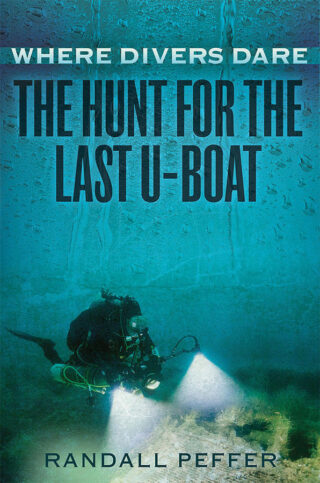 Where Divers Dare: The Hunt for the Last U-Boat (Randall Peffer, Berkley Caliber, New York, 2016, 320 pp., photographs, index, $28.00, hardcover)
Where Divers Dare: The Hunt for the Last U-Boat (Randall Peffer, Berkley Caliber, New York, 2016, 320 pp., photographs, index, $28.00, hardcover)
On the morning of April 16, 1944, the German submarine U-550 sank the large American tanker SS Pan Pennsylvania in the cold waters off of Nantucket, Massachusetts. The U-boat’s captain recalled seeing a number of bombers lashed to the ship’s deck before firing on it. Soon after the attack, a trio of American destroyer escorts raced to the area and attacked the evading sub, using depth charges to force it to the surface. Once its battered hull popped the American ships pummeled it with a barrage of cannon fire. The German sailors showed a white flare as a signal of surrender, their boat sinking rapidly. Only 13 made it out of the submarine and into American hands after one of the destroyer escorts comes alongside to rescue them.
The story continues decades later in 2012. The author and several companions, all divers, began a search for the long lost U-550. It was the last undiscovered U-boat off the American coast located in waters that were considered undiveable. They had interviewed survivors to gain information about the sub before beginning a series of dives, some of them quite risky. Their tenacious efforts would pay off with the discovery of U-550 and startling evidence about what happened to the rest of the submarine’s crew that day. The book reads as a nautical detective story, the author and his fellow divers piecing together the events surrounding the sinking as a mystery to be solved.
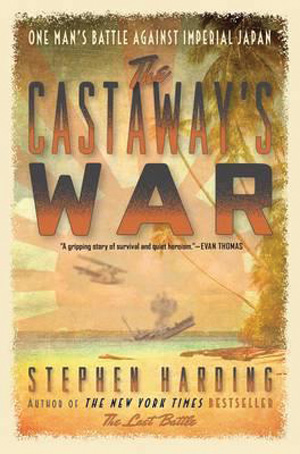 The Castaway’s War: One Man’s Battle Against Imperial Japan (Stephen Harding, Da Capo Press, Boston, MA, 2016, maps, photographs, notes, bibliography, index, $26.99, hardcover)
The Castaway’s War: One Man’s Battle Against Imperial Japan (Stephen Harding, Da Capo Press, Boston, MA, 2016, maps, photographs, notes, bibliography, index, $26.99, hardcover)
In the dead of night on July 5, 1943, the American destroyer USS Strong was part of a task force steaming through the Kula Gulf on a mission to attack the forces of the Japanese Empire. As the five American ships sailed through the dark waters, they met an enemy squadron of four destroyers, and a fierce battle began. During the action a Japanese Type 93 Long Lance torpedo rushed through the water and struck the Strong, breaking its keel and causing flooding and fires. The hapless ship soon sank into the Pacific, leaving scores of sailors drifting. Most of the survivors were rescued by the remaining American ships. One man, Lieutenant Hugh Barr Miller, was not saved. He drifted on a floater net until being washed ashore on Arundel Island. He was hurt, and the island was also home to a pair of Japanese infantry regiments. Despite his injuries, Miller resolved to learn as much as he could about the Japanese in the area. When he was rescued 39 days later, his information proved valuable to the Allied forces. During his time on the island he also waged war against the Japanese, using captured grenades to attack patrols and machine gunners.
This is an inspiring story of what a single man is capable of when he keeps his wits about him. The author shows how Miller managed to survive and take the war to his opponents. He also explains the larger events occurring in the area at that time, weaving large and small events together to give the reader an interesting tale of survival, endurance, and hardship.
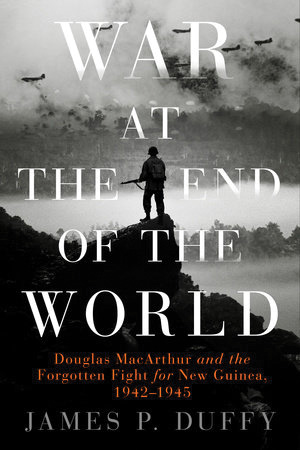 War at the End of the World: Douglas MacArthur and the Forgotten Fight for New Guinea, 1942-1945 (James P. Duffy, NAL Caliber, New York, 2016, 436 pp., maps, photographs, notes, bibliography, index, $28.00, hardcover)
War at the End of the World: Douglas MacArthur and the Forgotten Fight for New Guinea, 1942-1945 (James P. Duffy, NAL Caliber, New York, 2016, 436 pp., maps, photographs, notes, bibliography, index, $28.00, hardcover)
Seizing the island of New Guinea was a cornerstone of Japanese strategy in World War II. Holding it would help in the effort to knock Australia out of the war and protect other places the Japanese had taken and needed to hold. The Allies knew this and committed hundreds of thousands of troops to the struggle for the island over four years. The fighting there turned into a desperate slugging match as each army vied for control. In addition to the fighting, both armies had to contend with the horrors of New Guinea itself, fetid swamps, rough mountains, impenetrable jungles, and fast-moving rivers. The insects, heat, monsoon rains, and disease endemic to the island took a horrific toll on the soldiers sent to fight—and die—there.
This is a full and complete look at a campaign that is still largely unknown today despite its importance in the conduct of the war. The author brings to life both the terrible conditions and the rough courage shown by the soldiers having to endure them. It is a fitting testimonial to the suffering and sacrifice shown by both sides.
 The History of the Panzerwaffe, Volume 1: 1939-42 (Thomas Anderson, Osprey Publishing, Oxford, UK, 2016, 304 pp., maps, photographs, bibliography, index, $39.95, hardcover)
The History of the Panzerwaffe, Volume 1: 1939-42 (Thomas Anderson, Osprey Publishing, Oxford, UK, 2016, 304 pp., maps, photographs, bibliography, index, $39.95, hardcover)
The armored branch of the German Army laid the foundation for tank warfare up to the modern day. It took a series of experiments and theories from across the world and formed them into a coherent doctrine that took the Nazi war machine through a series of victories between 1939 and 1942. The panzer troops were so successful that they struck fear into their opponents despite the fact that the bulk of their army was still moving by horse and on foot. Tank crews were considered among the elite of the military, and their achievements backed that claim.
This is both a technical and operational history of the German tank arm during the height of its accomplishments. The author looks at the panzer’s origins and early uses, such as during the Spanish Civil War, before moving on to World War II. He uses developmental reports, combat records, and the writings of the tank crews to create a well-blended look at how tanks were used at the war’s beginning. The book is also full of period photographs, many from previously unused collections, providing a look at these war machines in action.
New and Noteworthy
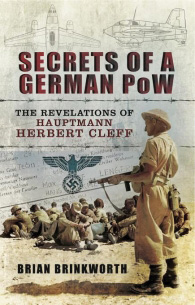 Secrets of a German POW: The Capture and Interrogation of Hauptmann Herbert Cleff (Brian Brinkworth, Skyhorse Publishing, 2016, $22.99, hardcover) The story of a captured German officer who gave his interrogators information about secret Nazi projects, hinting at advanced weapons the Allies had to worry about.
Secrets of a German POW: The Capture and Interrogation of Hauptmann Herbert Cleff (Brian Brinkworth, Skyhorse Publishing, 2016, $22.99, hardcover) The story of a captured German officer who gave his interrogators information about secret Nazi projects, hinting at advanced weapons the Allies had to worry about.
Lucie Aubrac: The French Resistance Heroine Who Outwitted the Gestapo (Sian Rees, Chicago Review Press, 2016, $26.99, hardcover) This account studies a famous member of the French Resistance who was later accused of being an informant. It seeks to penetrate the many claims made by and about her.
Dick Cole’s War: Doolittle Raider, Hump Pilot, Air Commando (Dennis R. Okerstrom, University of Missouri Press, 2015, $29.95, hardcover) The subject of this book flew in the famous Doolittle Raid in April 1942 before spending the rest of the war flying missions from India. His adventures are related in great detail.
Abducting a General: The Kreipe Operation in Crete (Patrick Leigh Fermor, New York Review Books, 2015, $24.95, hardcover) The author is a veteran of the famous Special Operations Executive. This is his personal account of the mission to kidnap a German general in 1944.
Daily Life in Wartime Japan 1940-1945 (Samuel Hideo Yamashita, University Press of Kansas, 2016, $29.95, hardcover) A study of what Japanese civilian life was like during World War II. It includes their opinions and beliefs as the war turned against their country.
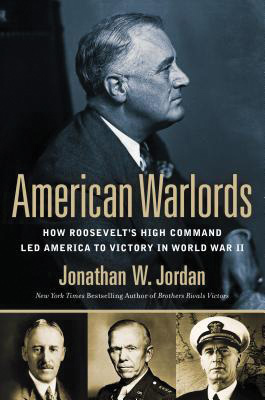 American Warlords: How Roosevelt’s High Command Led America to Victory in World War II (Jonathan W. Jordan, NAL Caliber, 2015, $28.95, hardcover) This work examines how President Roosevelt’s team of politicians and military officers worked to achieve ultimate triumph. Both their strengths and flaws are studied.
American Warlords: How Roosevelt’s High Command Led America to Victory in World War II (Jonathan W. Jordan, NAL Caliber, 2015, $28.95, hardcover) This work examines how President Roosevelt’s team of politicians and military officers worked to achieve ultimate triumph. Both their strengths and flaws are studied.
From Day to Day: One Man’s Diary of Survival in Nazi Concentration Camps (Odd Nansen, Vanderbilt University Press, 2016, $39.95, hardcover) The author is a Norwegian who was arrested by the Nazis and spent the rest of the war in various camps. This book is a diary he secretly kept during his ordeal.
Fight to the Finish: Canadians in the Second World War 1944-1945 (Tim Cook, Penguin Random House, 2015, $40.00, hardcover) This is an in-depth account of the Canadian experience in the European Theater. It includes veteran interviews and evaluations of their actions.
US Infantryman vs German Infantryman: European Theater of Operations 1944 (Steven J. Zaloga, Osprey Publishing, 2016, $18.95, softcover) A comparison of the American and German fighting forces from D-Day to the Ardennes, including examples of notable battlefield actions.
Valentine Infantry Tank: 1938-45 (Bruce Oliver Newsome, Osprey Publishing, 2016, $18.00, softcover) This tank was intended as a stopgap for the British Army but wound up being produced in greater numbers than any of their designs. The tank and its variants served in every theater of the war.
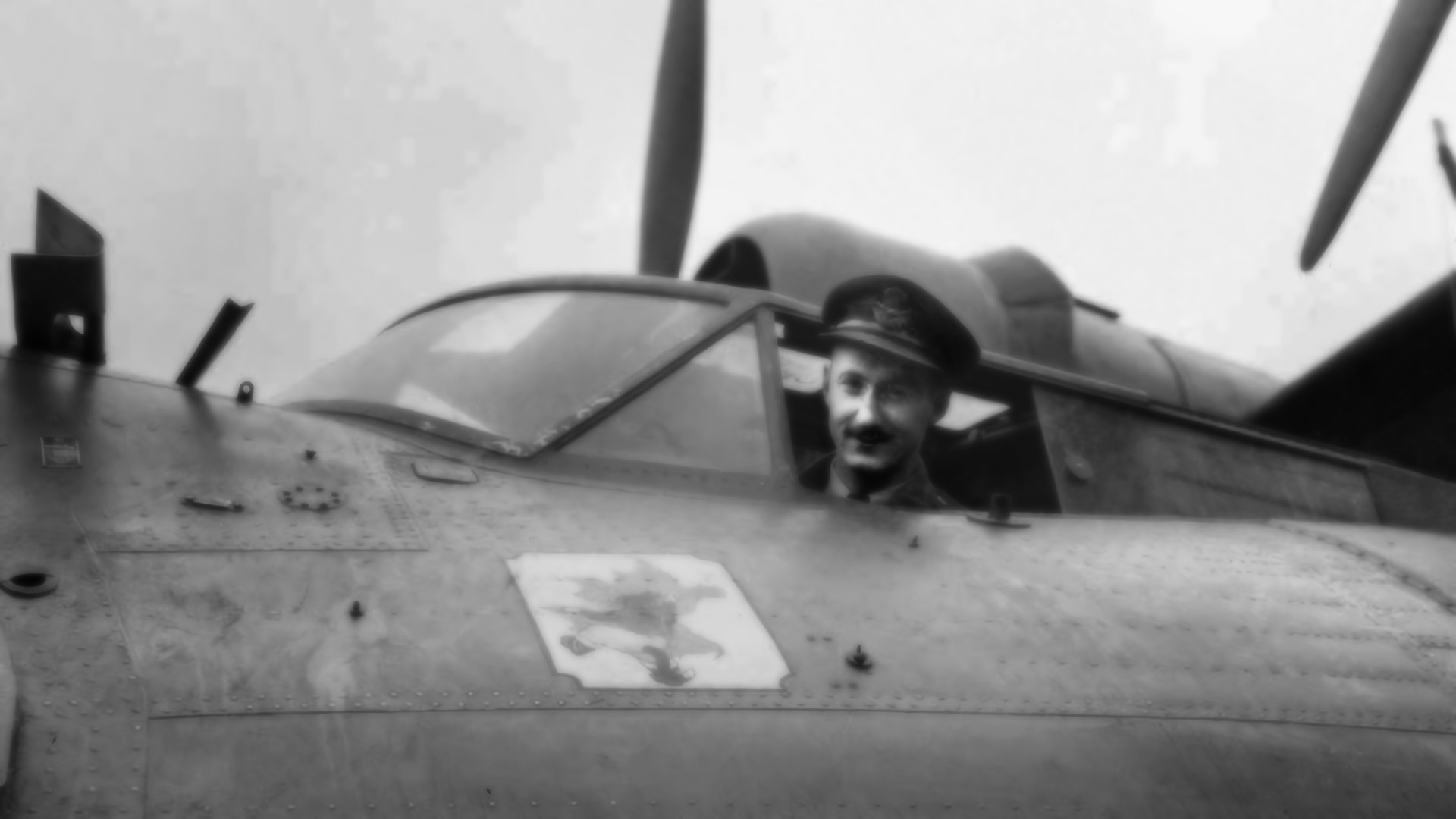
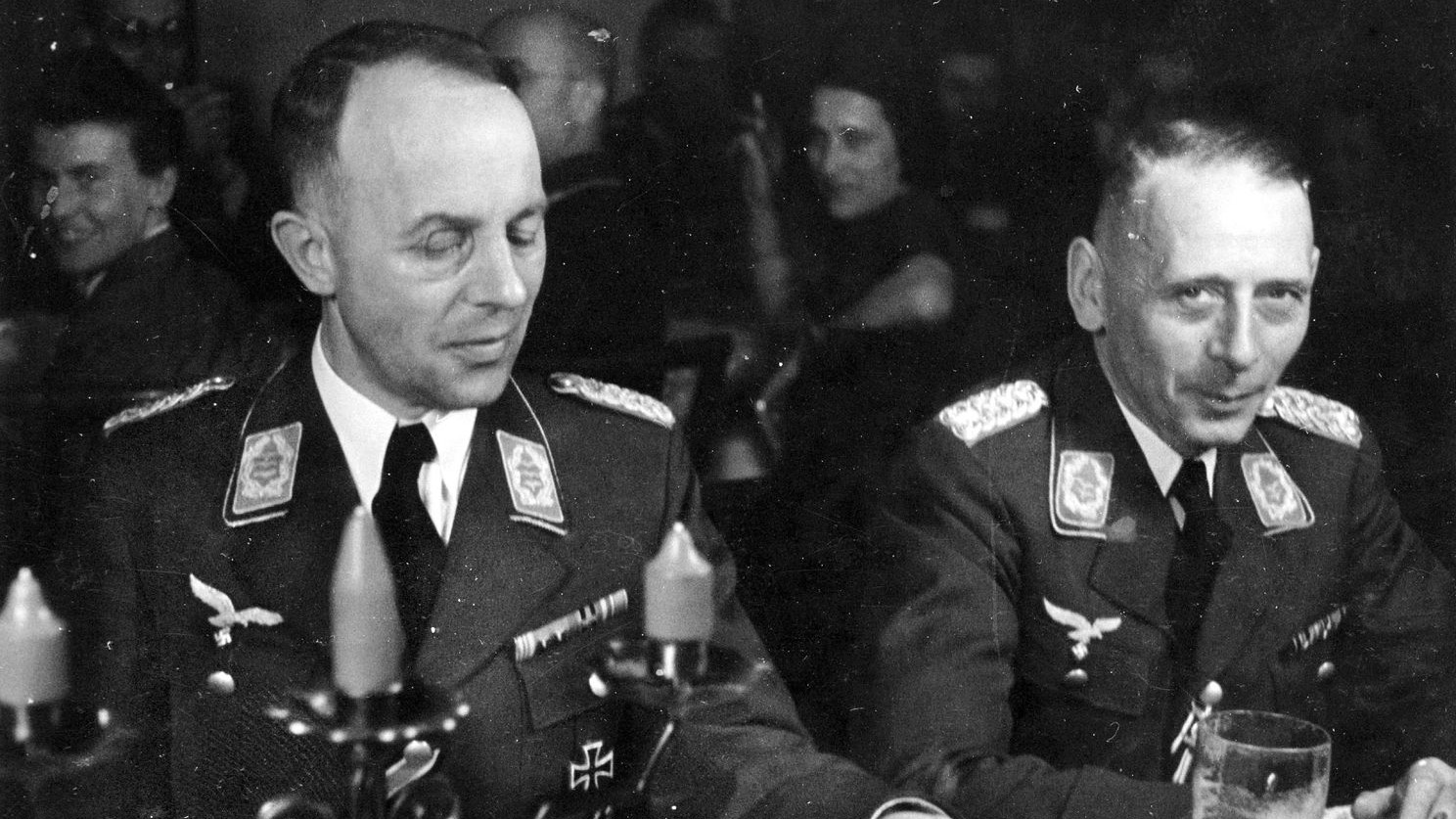
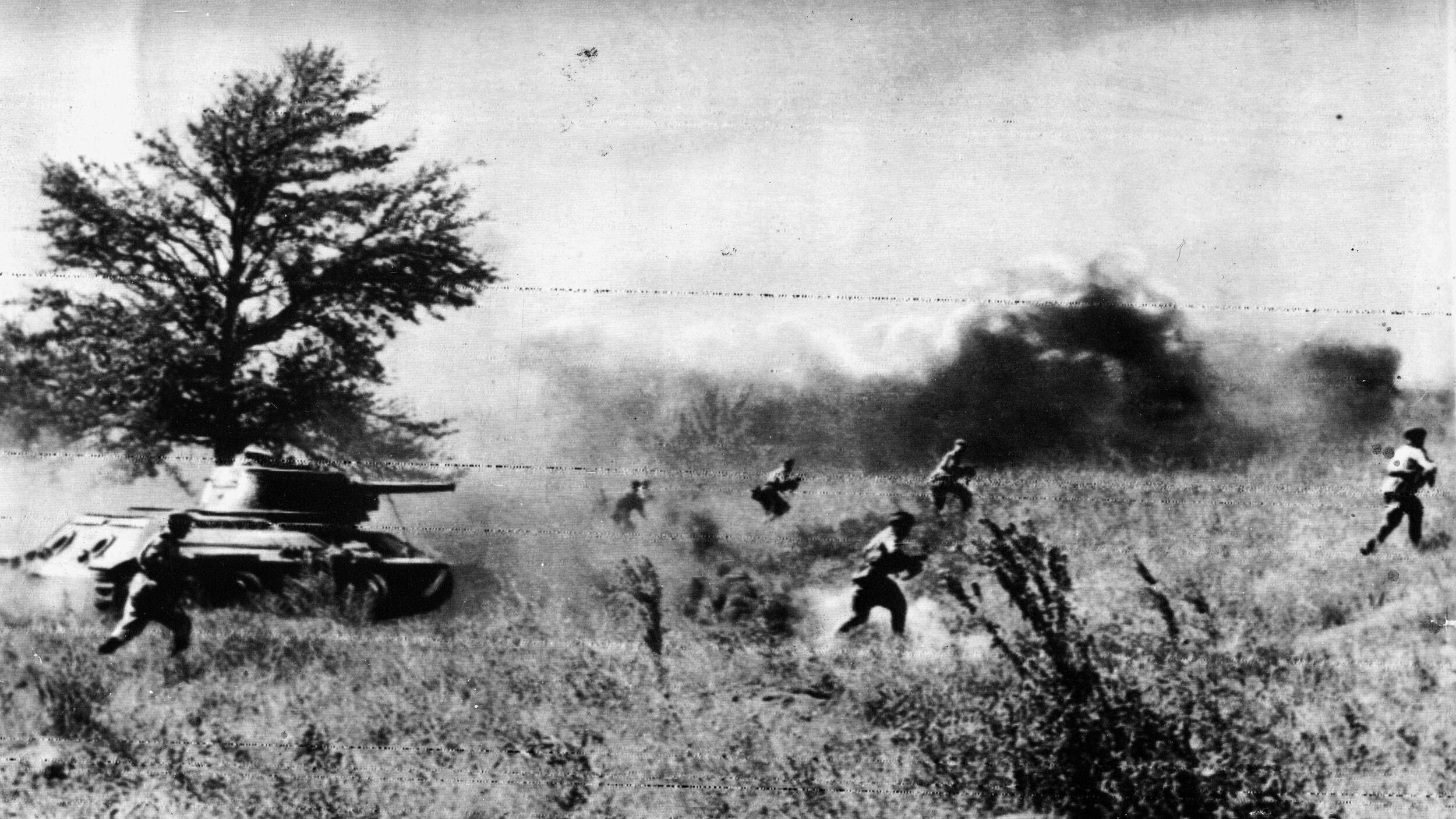
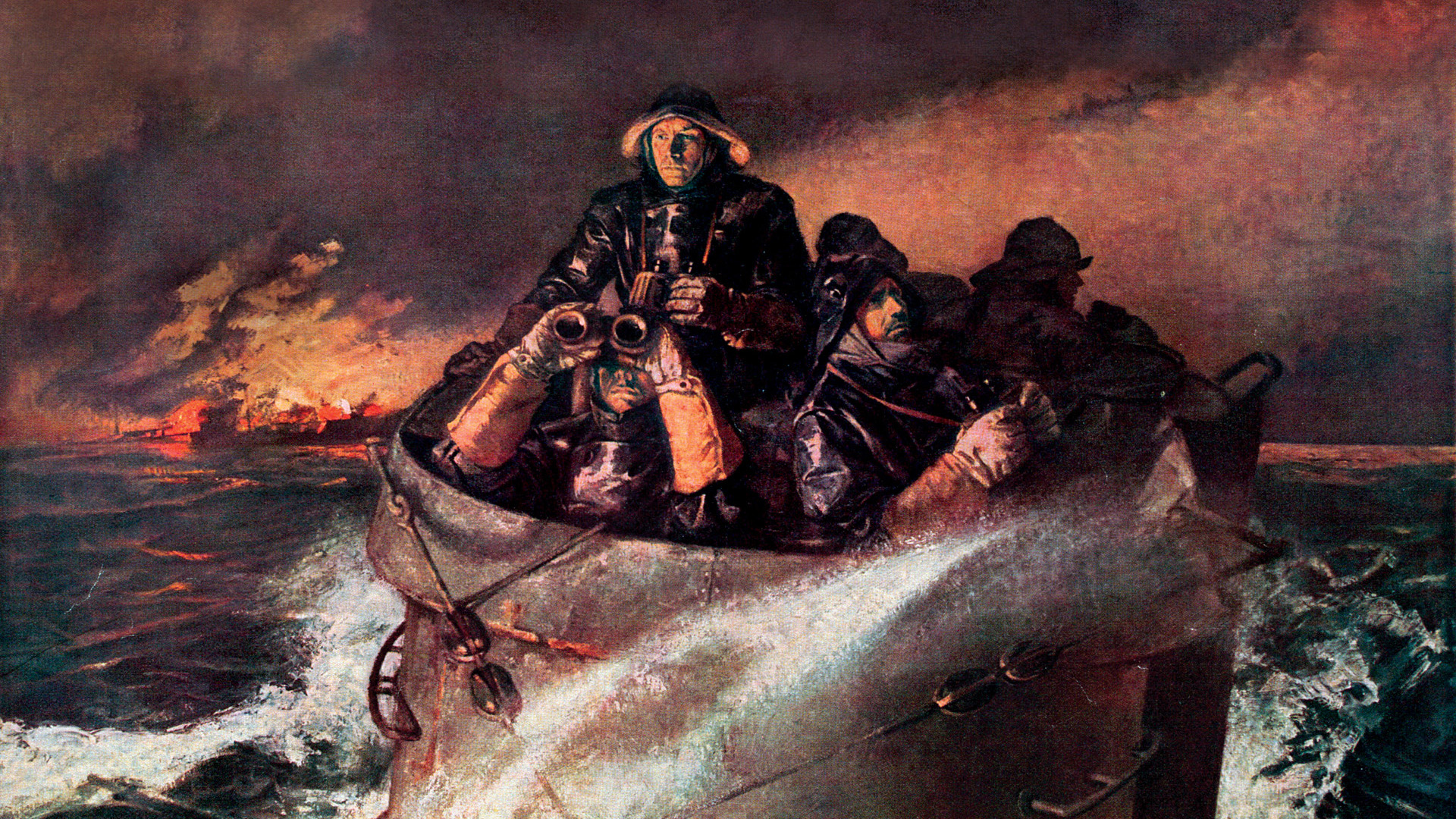
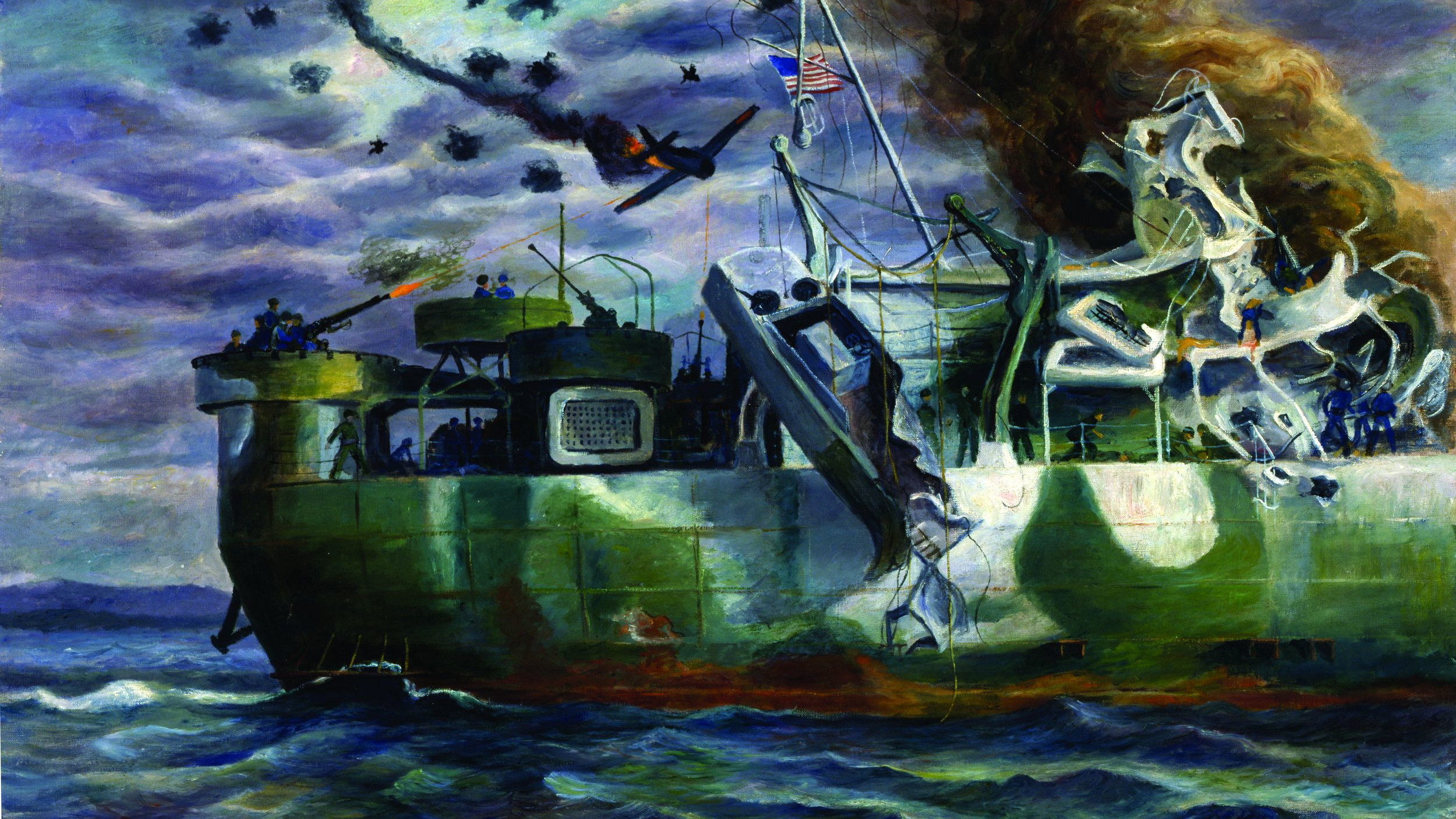

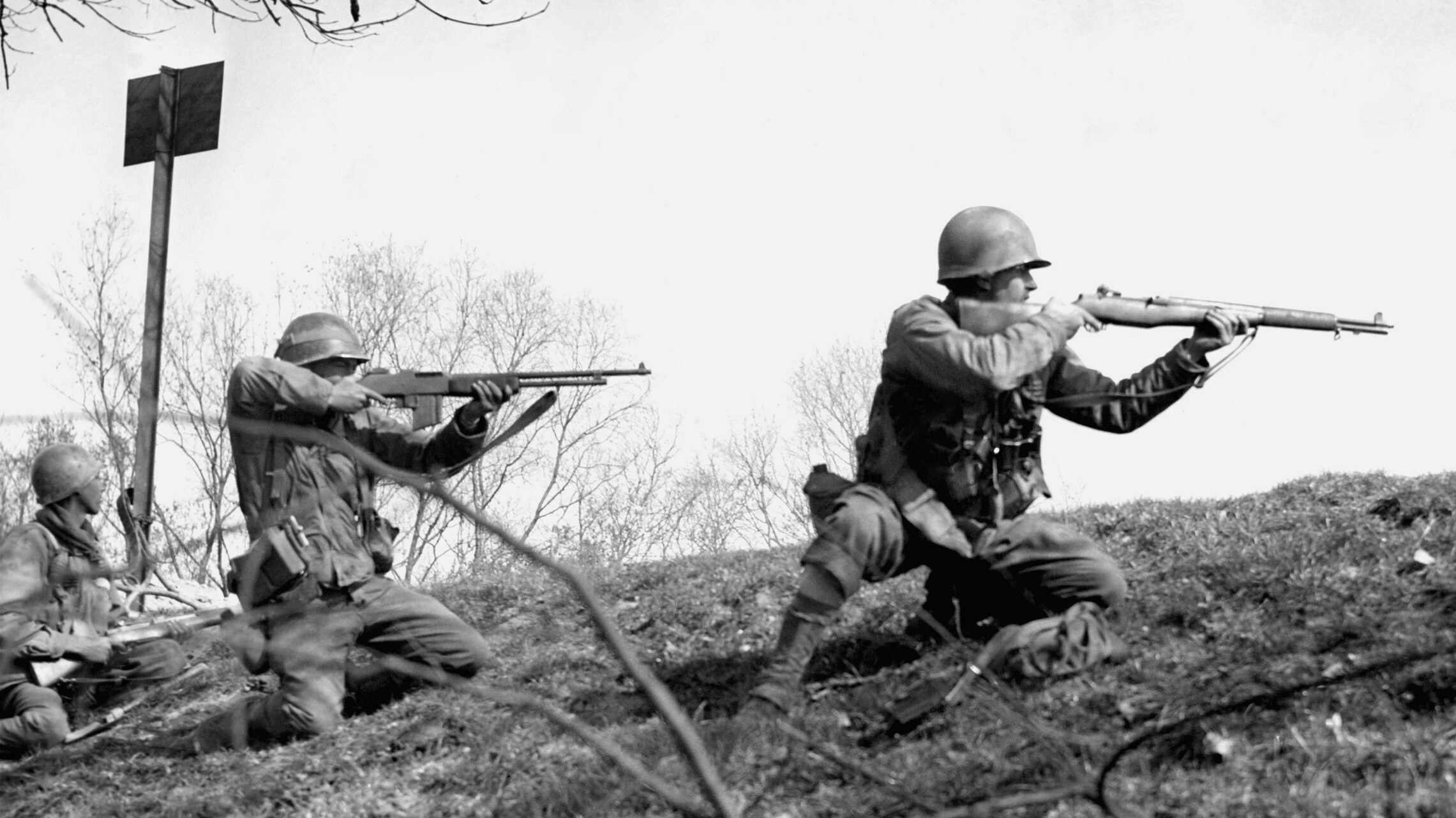
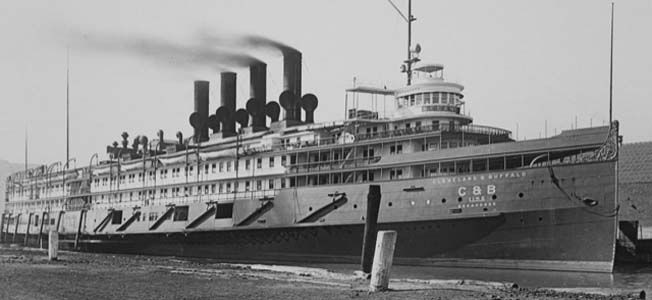
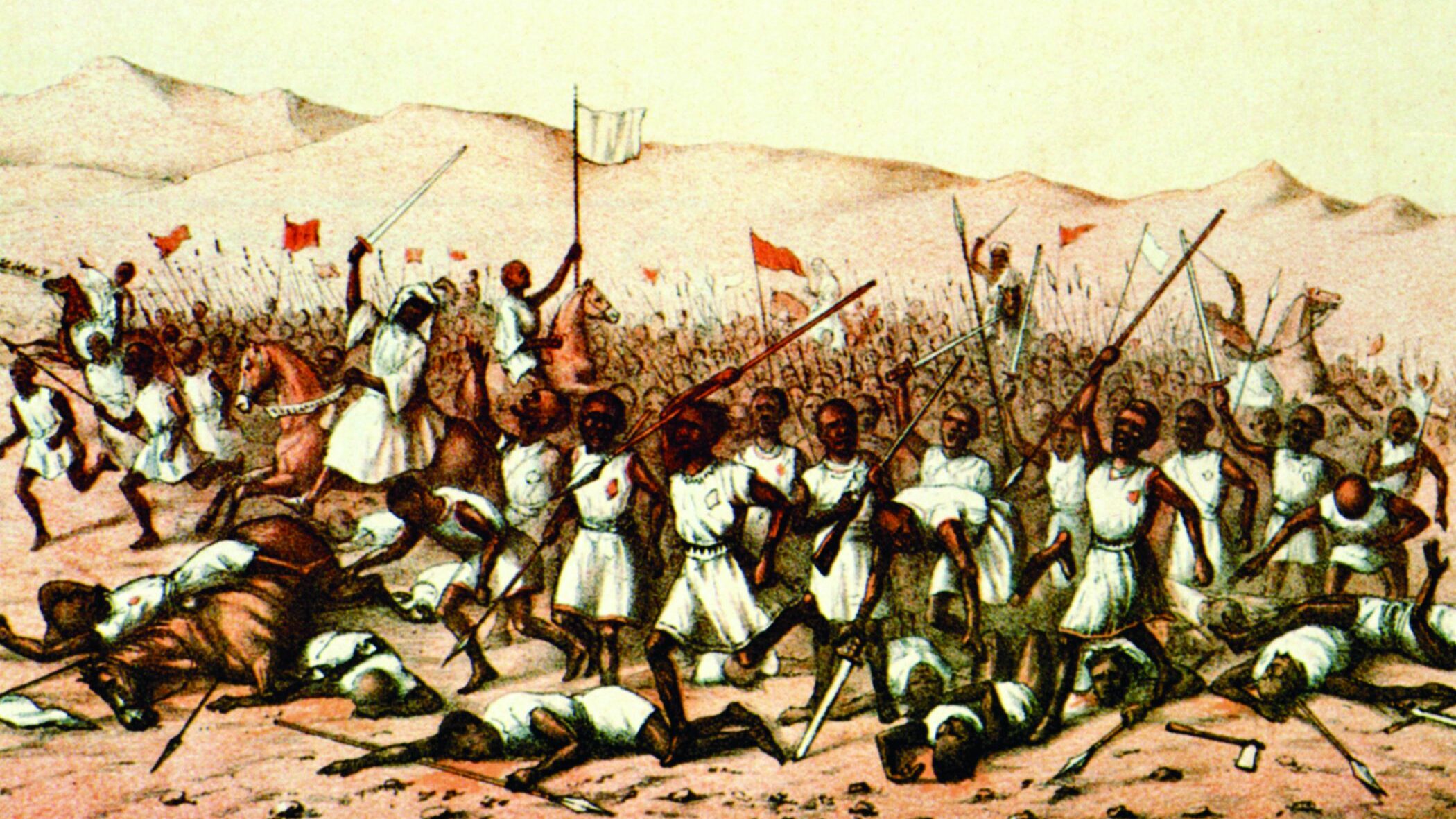
Join The Conversation
Comments
View All Comments